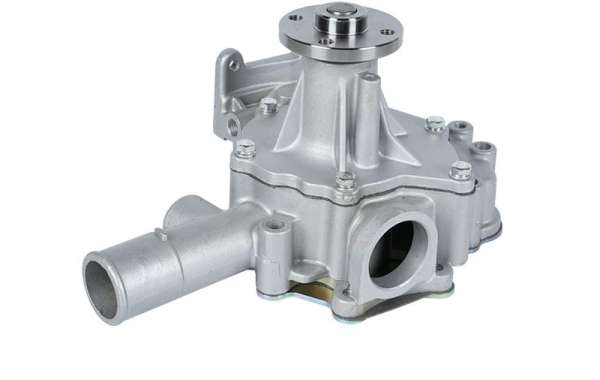The thermal management of an internal combustion engine is a dynamic process, and the component that initiates and sustains coolant circulation is the Engine Water Pump. This pump acts as the heart of the cooling system, creating the flow necessary to transport thermal energy away from the engine. By continuously moving a water and antifreeze mixture, the Engine Water Pump ensures that temperatures remain within a safe operating window, which is critical for engine efficiency, emission control, and component longevity. The failure of this single pump can disrupt the entire thermal equilibrium of the engine, highlighting its systemic importance. The design and reliability of the Engine Water Pump are therefore integral to the overall performance and dependability of the vehicle.
Diagnosing issues with an Engine Water Pump requires attention to specific symptoms. The most evident sign of a problem is a visible coolant leak originating from the pump's body. A worn seal will allow coolant to escape, often through a designated weep hole. Another indicator is an unusual noise, such as a high-pitched whine or a grinding sound, which suggests bearing failure within the Engine Water Pump. If the pump's impeller becomes corroded or damaged, it may not move coolant effectively, leading to a gradual or sudden increase in engine operating temperature, as shown on the vehicle's temperature gauge. In some cases, the bearing failure can cause the shaft to wobble, leading to damage to the drive pulley and potential belt failure. Recognizing these signs is important for addressing Engine Water Pump issues before they lead to complete engine overheating.
The process of replacing an Engine Water Pump varies by vehicle but is generally considered a significant maintenance procedure. Access to the pump often requires the removal of other components, such as drive belts, tensioners, and sometimes the timing cover and timing belt itself. Because of the labor involved, it is a common and recommended practice to install a new Engine Water Pump whenever the timing belt is replaced. This proactive approach is economically sensible, as the cost of the pump is small compared to the labor cost of accessing it a second time. When installing a new Engine Water Pump, it is also advisable to replace the coolant and inspect other cooling system components, such as hoses and the thermostat, to ensure the entire system functions reliably with the new pump.
The Engine Water Pump is a crucial and active component that demands attention and understanding from vehicle owners and technicians. Its role in circulating coolant is fundamental to preventing the destructive effects of engine overheating. The lifecycle of the Engine Water Pump is finite, and its eventual failure is a expected aspect of vehicle maintenance. Through vigilant monitoring for symptoms of wear and adherence to scheduled replacement intervals, the integrity of the cooling system can be maintained. The dependable operation of the Engine Water Pump is a key contributor to the long-term health and functional capability of the internal combustion engine, securing its place as a vital automotive component.






